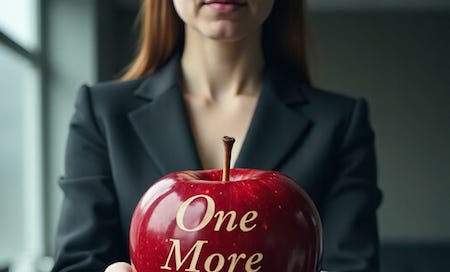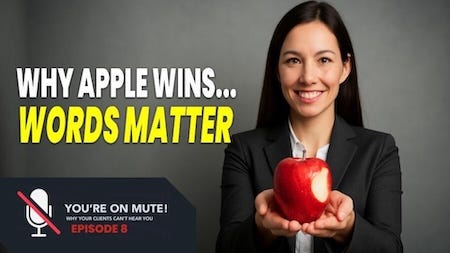In the ever-noisy world of modern marketing, it's easy to assume that having the right product is enough to win attention, engagement, and ultimately, sales. But in reality, messaging is everything. What you say matters—but how you say it might matter even more.
One of the most iconic examples of this principle in action comes from a brand synonymous with sleek design and customer obsession: Apple. Their keynotes are masterclasses in persuasive communication, and a deep dive into their methods reveals why their words hold such power.
Apple doesn’t just sell a product—they sell an experience.
From the moment they announce a new device, they’re not pushing specs; they’re crafting a feeling. That emotional resonance is what allows them to charge a premium. Consumers aren’t just buying a phone or a laptop; they’re buying into a lifestyle, a story, and a brand that understands them.
In fact, Apple keynotes consistently rely on a small set of highly persuasive words: Incredible, Amazing, Beautiful, Simple, Fast, Powerful, Best, New, Innovative, and Magical. Each of these words appeals to emotions and expectations, promising not just a product but a transformation.
But the real magic isn’t just in the words; it's in how those words are delivered. Apple speakers employ time-tested persuasive techniques that marketers in any field can learn from. Let’s explore ten of the most effective tactics that Apple consistently uses to elevate its message.
1. The Rule of Three
Apple often presents features in threes: "Thinner, Lighter, Faster." This structure feels complete, rhythmic, and easy to remember.
2. Clear, Visual Storytelling
Every product is embedded in a story. Apple doesn’t sell features; they sell solutions to problems you didn't know you had.
3. Simplicity in Language
Apple avoids technical jargon, choosing instead to use everyday language. This approach makes their message accessible to everyone, not just tech enthusiasts.
4. Strategic Pausing
A dramatic pause before revealing a major announcement—like the classic "One more thing"—builds suspense and captures the audience's full attention.
5. Contrast and Before/After Framing
Apple illustrates what your life was like before their product and how it will improve afterward. It's not about the product; it's about you.
6. Audience Inclusion Phrases
Like "You’re going to love this," engage the audience in the story. It’s not about the product—it’s about what the product signifies for them.
7. Meticulous Visual Design
Their slides are clean, elegant, and minimalistic. Each slide presents one idea, avoiding bullet-point overload.
8. Credibility Anchors
Brief statistics, awards, or third-party endorsements foster trust without being overwhelming.
9. Magical Product Demos
Live demonstrations showcase the product in ways that feel effortless and often surprising.
10. The "One More Thing" Surprise
This signature move creates an emotional high point, making the presentation feel more like an experience rather than a sales pitch.
These techniques are powerful, but they truly shine when paired with intentional problem/solution framing. Apple excels at identifying problems that their users may not have even articulated yet, then swooping in with elegant, desirable solutions.
Consider a few recent keynote examples:
Battery Anxiety
Problem: The constant need to recharge older iPhones.
Solution: The iPhone 15 Pro Max with all-day battery life.
Apple frames this as freedom, not just more battery—a way to live untethered.
Low-Quality Photos
Problem: "Your photos don't do the moment justice."
Solution: iPhone’s Photonic Engine + Smart HDR 5.
They don’t focus on megapixels—they focus on how your memories finally look the way they felt.
Fragile Devices
Problem: Cracked screens and bent phones.
Solution: iPhone with Ceramic Shield and Titanium design.
They convey a sense of durability and elegance, reinforcing Apple’s premium positioning.
Slow Mobile Workflows
Problem: Working on the go is cumbersome and slow.
Solution: iPad Pro with M2 chip and Magic Keyboard.
Here, the iPad isn’t just a tablet—it’s your new office in a sleek, portable design.
Health Tracking Limitations
Problem: Your watch can’t keep up with your health goals.
Solution: Apple Watch Ultra + watchOS fitness upgrades.
It becomes your durable, 24/7 health companion.
Each example illustrates how the same product can be positioned in various ways, but Apple opts to tell stories that focus on the customer experience and portray the product as a hero.
What does this mean for your marketing?
It means that the way you position your product or service is just as important as the product or service itself. You can list features or you can tell stories. You can describe specifications, or you can solve problems. You can communicate benefits, or you can evoke transformation.
If you're not getting the engagement you want, take a cue from Apple. Audit your words. Simplify your slides. Tell better stories. Create tension. Resolve it. Surprise your audience. And above all, speak their language.
Questions? Please email us at info@thesaltzmangroup.com
SCHEDULE a 30-minute discovery call.
One More Thing
Check out our 2-3 minute YouTube Snarky Summaries. (please LIKE and SUBSCRIBE)





